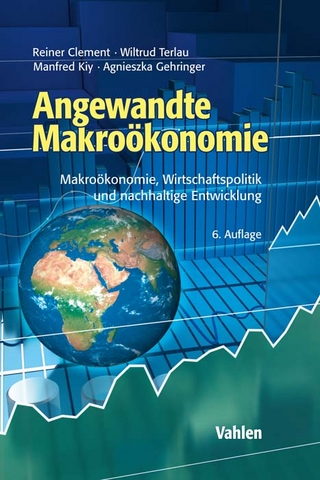
International Commodity Control
A Contemporary History and Appraisal
Seiten
2024
Routledge (Verlag)
978-1-032-68793-3 (ISBN)
Routledge (Verlag)
978-1-032-68793-3 (ISBN)
Originally published in 1984, at a time when international commodity control was brought from the periphery to the centre of international trade policy, this book provided a new and more comprehensive approach to, and an analytical appraisal of, international commodity controls.
Originally published in 1984, at a time when international commodity control was brought from the periphery to the centre of international trade policy, this book provided a new and more comprehensive approach to, and an analytical appraisal of, international commodity controls, from their origins in the 1920s to their widespread acceptance as an important element in international trade policy in the 1970s. The first part establishes the economic and institutional background against which controls were introduced and includes sections on a wide range of issues such as the changing structure of world commodity trade and the roles of GATT, UNCTAD and the former EEC. Part 2 considers the principal control mechanisms which have been used at the international level and review the national counterparts and alternatives. Part 3 assesses on a commodity-by-commodity basis how the control worked in practice. It covers all the international commodity agreements to 1982 and also considers examples of raw material cartels.
Originally published in 1984, at a time when international commodity control was brought from the periphery to the centre of international trade policy, this book provided a new and more comprehensive approach to, and an analytical appraisal of, international commodity controls, from their origins in the 1920s to their widespread acceptance as an important element in international trade policy in the 1970s. The first part establishes the economic and institutional background against which controls were introduced and includes sections on a wide range of issues such as the changing structure of world commodity trade and the roles of GATT, UNCTAD and the former EEC. Part 2 considers the principal control mechanisms which have been used at the international level and review the national counterparts and alternatives. Part 3 assesses on a commodity-by-commodity basis how the control worked in practice. It covers all the international commodity agreements to 1982 and also considers examples of raw material cartels.
Fiona Gordon-Ashworth worked in the International Division of the Bank of England.
Part 1: The Economic and Institutional Framework of International Commodity Control 1. Primary Commodity Trade and Associate Problems 2. The Development of International Policy Concerning Commodities 3. The Role of New Trading Blocs and of the US since 1945 Part 2: The Mechanics of Commodity Control 4. International Controls 5. National Counterparts and Alternatives Part 3: International Control in Practice 6. Tin 7. Wheat 8. Sugar 9. Rubber 10. Coffee 11. Cocoa 12. Tea 13. Olive Oil 14. Cartels. Appendix: International Commodity Agreements: A Summary of Key Features
| Erscheinungsdatum | 03.02.2024 |
|---|---|
| Reihe/Serie | Routledge Library Editions: Commodities |
| Verlagsort | London |
| Sprache | englisch |
| Maße | 138 x 216 mm |
| Gewicht | 857 g |
| Themenwelt | Wirtschaft ► Volkswirtschaftslehre ► Makroökonomie |
| Weitere Fachgebiete ► Land- / Forstwirtschaft / Fischerei | |
| ISBN-10 | 1-032-68793-2 / 1032687932 |
| ISBN-13 | 978-1-032-68793-3 / 9781032687933 |
| Zustand | Neuware |
| Haben Sie eine Frage zum Produkt? |
Mehr entdecken
aus dem Bereich
aus dem Bereich
Volkswirtschaftslehre für eine sich ändernde Welt
Buch | Hardcover (2024)
De Gruyter Oldenbourg (Verlag)
44,95 €
Kompakt und prüfungsrelevant für Wirtschaftswissenschaftler
Buch | Softcover (2021)
Vahlen, Franz (Verlag)
11,90 €
Makroökonomie, Wirtschaftspolitik und nachhaltige Entwicklung
Buch | Hardcover (2022)
Vahlen (Verlag)
49,80 €


